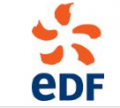CARBON PRICES AND THE CARBON MARKET

Scientific project
The functioning of the European CO2 allowances system.
The objective is to understand the operating rules of the ETS by monitoring and analysing the conformity data of the facilities covered and transaction data. Researchers analyse the mechanisms of price formation and trading in the market. The latest proposals from the European Commission (Market Stability Reserve) are evaluated. The electrical sector and the heat production sector are the subject of specific studies.
The spread of carbon pricing elsewhere in the world
The first aspect is the geographical location of emerging carbon markets in the rest of the world (North America and Asia as a priority) and carbon tax initiatives. The second aspect is the extension of the carbon price signal through the use of mechanisms such as the CDM. Direct or indirect linkage between markets is also addressed, from a theoretical and practical standpoint.
Governance and coordination of economic instruments
At European level, the objective is to observe and understand the interactions between the carbon market and other European or national energy and climate policies (renewable electricity, energy efficiency, etc.) and to assess the implications for the current governance of carbon markets, particularly through the on-going debate on reform of the EU ETS. The question of the correct linkage between taxation and the market is also addressed. At the global level, the research team focuses on the role of economic instruments in international negotiations within the framework of the 2015 Paris COP, especially the possible emergence of a transcontinental carbon market.
Transverse tools: the ZEPHYR simulation model
To document our work and make progress in understanding CO2 allowance trading systems, the Research Initiative is developing a simulation model (ZEPHYR) of the EU ETS over the 2030-2050 time frame. This model provides a better understanding of the market to those involved in the EU ETS (training and the convergence of supply and demand). It provides a medium-term analysis of the impact of fundamentals (economic cycles, energy prices, etc.) on the emissions from the sectors concerned and on the market price of CO2. The ZEPHYR model fuels the debate on the evolution of the EU ETS system and in particular on its operating rules (Market Stability Reserve, the 2030 Climate and Energy Package, etc.)
Development priorities
- Development of the ZEPHYR model and associated modules as research integration tools (development of a module for the electrical sector and for the heat sector in particular).
- Measurement of the interactions between climate and energy policies: mechanisms for incentives for the development of renewables and energy efficiency, and their impact on the ETS.
- Study of cap-and-trade programmes outside Europe and the question of direct or indirect linkages between markets.
- 2015 Paris COP21: drawing lessons from 20 years of negotiations, consideration of the role of economic tools in a global agreement, possible forms and impact of linkage between markets.
Scientific officer

Academic Partner

Economic Partners






